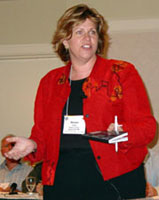Classroom Strategies for Exploring Realism and Authenticity in Media Messages
|
|
By Renee Hobbs
Abstract:
Teachers can improve students' critical reading and viewing skills through interactive learning activities that make use of a wide range of nonfiction media, including film, television, print, and the Internet. Four classroom learning experiences designed to facilitate careful analysis of the ways in which media messages are constructed are described in this article. These activities, appropriate for children aged approximately 12 and older, are intended to create a learning environment that encourages active discourse on critical questions about information sources, belief, uncertainty and doubt, authority, credibility, and judgments of realism. Strategies for critically analyzing realism in nonfiction film and television and for evaluating the credibility of Web sites are emphasized.
Classroom strategies for exploring realism and authenticity in media messages. Reading Online, 4(9). International Reading Association.
Available at:
http://www.readingonline.org/newliteracies/lit_index.asp?HREF=/newliteracies/hobbs/index.html



